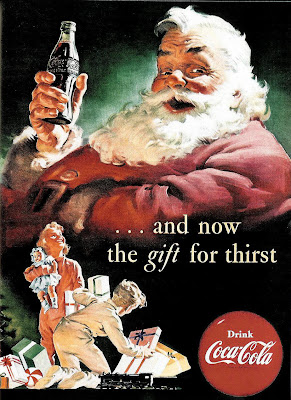What's the thinking behind this fanciful ad for True Temper golf clubs? Is it the allure of the moon, pock-marked with craters, as a kind of ready-made planetary golf course? In the second column, the copy makes a more grounded connection: ...the True Temper aluminum shafts, used by the leading club makers, are fabricated of an aluminum alloy recently developed for aviation and aerospace projects. But wait. Did I call this ad fanciful? Apollo 14 astronaut Alan Shepard, walking on the moon, actually did swing a club at two golf balls. Talking by radio to NASA at the time, Shepard said, " you might recognize what I have in my hand as the handle for the contingency sample return; it just so happens to have a genuine six iron on the bottom of it ... Unfortunately, the suit is so stiff, I can't do this with two hands, but I'm going to try a little sand-trap shot here." Though he initially said that the second shot went "miles and miles and miles" in the m...





